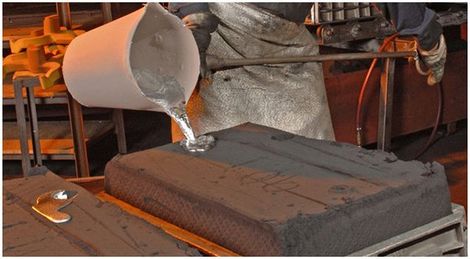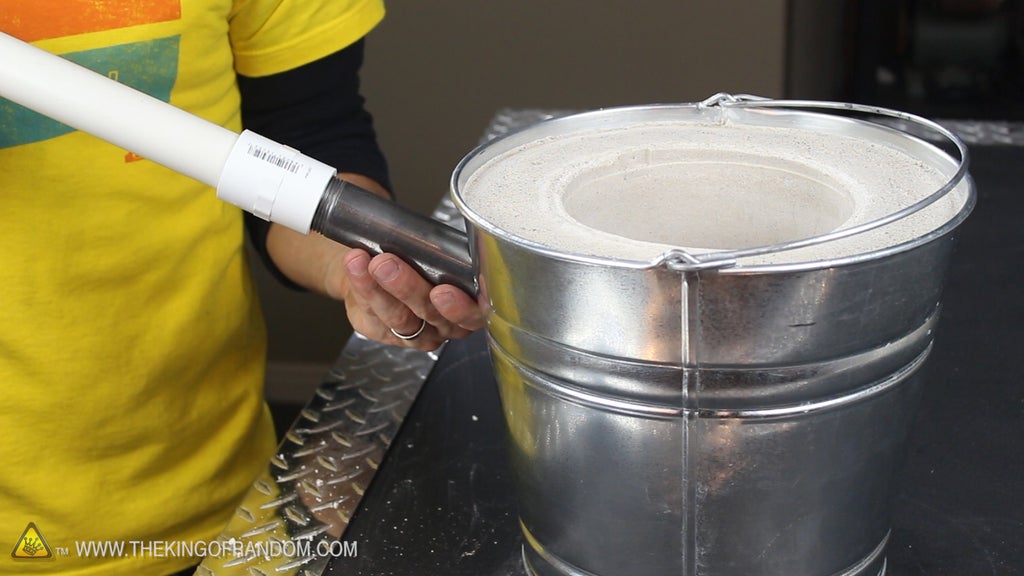Understanding the different types of Metal Casting methods used today
Discover the Cutting-edge Methods Utilized in a Metal Foundry for Superior Casting Outcomes
In today's affordable production landscape, metal foundries are increasingly taking on innovative strategies to enhance spreading results - Aluminum Foundry. Advanced computer system simulations enable specific modeling of liquified metal actions, while 3D printing makes it possible for fast manufacturing of complicated molds. Furthermore, environmentally friendly products and automation enhance operations. These developments guarantee substantial renovations in efficiency and top quality control. The influence of these modern technologies on sustainability and production methods remains to be completely discovered.
Advanced Computer Simulations in Metal Casting
Advanced computer simulations have transformed the metal casting procedure by improving precision and efficiency. These advanced devices allow designers to create digital models of cast parts, enabling them to examine and predict the habits of molten metal during the casting stage. By simulating numerous specifications such as temperature level, circulation rate, and cooling prices, makers can recognize potential issues prior to physical production starts.
This positive technique minimizes waste and reduces expensive mistakes, ultimately causing enhanced item top quality. In addition, simulations facilitate the optimization of mold and mildew designs, making certain that they fulfill the details needs of each task. The integration of computational liquid characteristics (CFD) and limited component evaluation (FEA) additional adds to the precision of these simulations, offering insights that were previously unattainable. Consequently, advanced computer system simulations have ended up being an essential element of modern metal foundries, greatly advancing the industry's capacities.
3D Printing for Molds and Patterns
3D printing has actually become a groundbreaking strategy for developing mold and mildews and patterns in the metal foundry market. This innovation makes it possible for the rapid manufacturing of complicated geometries that traditional manufacturing approaches have a hard time to accomplish. By utilizing additive manufacturing, foundries can create elaborate designs with reduced lead times and material waste. The capability to produce molds on need allows for higher adaptability in design models, helping with faster prototyping and adjustments.
3D printing can utilize a range of products, including metals and plastics, customized to particular casting needs. This flexibility boosts the precision of mold and mildews, resulting in exceptional spreading results with enhanced surface area coatings. Additionally, the reduction in the variety of components called for streamlines setting up procedures, additionally enhancing manufacturing efficiency. As foundries continue to take on 3D printing, they are poised to redefine industry criteria, paving the way for advancement and improved performance in metal spreading operations.
Eco-Friendly Products and Processes
As the metal foundry industry encounters boosting stress to minimize its ecological impact, the adoption of green materials and processes has actually become vital. Foundries are currently exploring sustainable alternatives to conventional materials, such as utilizing recycled steels and bio-based binders. These materials not just minimize waste but also lower energy usage during manufacturing.
Furthermore, advancements in sand casting techniques have resulted in making use of synthetic sands that are less hazardous to the setting. Factories are additionally applying innovative procedures like liquified metal therapy that minimizes emissions and improves the high quality of cast items.
Water-based layers have replaced harmful solvents, advertising a much safer job atmosphere. By integrating these eco-friendly practices, metal foundries can substantially reduce their eco-friendly impact while preserving high-quality spreading outcomes. This shift not just benefits the environment however likewise aligns with the growing consumer demand for sustainable production services
Automation and Robotics in Foundry Workflow
While the metal foundry sector welcomes innovation, the assimilation of automation and robotics is changing procedures substantially. Automated systems simplify processes such as mold production, metal putting, and casting completing, substantially enhancing efficiency. Robotics you could try this out promote the handling of heavy products, lowering the risk of office injuries and ensuring much safer atmospheres.

Better, using automated directed lorries (AGVs) enhances material transportation within centers, making sure prompt distribution of components to suitable workstations. By applying these technologies, foundries can adjust to changing demands with better dexterity, eventually resulting in enhanced success and competitiveness in the marketplace. As automation and robotics remain to advance, they hold the possible to redefine typical foundry methods and drive additional improvements in casting techniques.
Real-Time Surveillance and Quality Assurance Techniques
The developments in automation and robotics have actually paved the means for a lot more sophisticated techniques to quality guarantee in metal foundries. Real-time surveillance systems make use of innovative sensors and information analytics to track important criteria throughout the spreading process. These systems constantly evaluate variables such as stress, temperature, and product composition, enabling immediate discovery of discrepancies from established standards.
Quality assurance techniques now integrate equipment learning algorithms that evaluate historical data to anticipate prospective defects prior to they take place. This aggressive strategy minimizes waste and improves overall manufacturing effectiveness. In addition, incorporated feedback loopholes permit for fast modifications, guaranteeing that each casting fulfills strict high quality demands.
The execution of digital doubles-- digital reproductions of physical properties-- has actually likewise changed quality assurance, allowing engineers to simulate and enhance procedures in real-time. With each other, these cutting-edge methods substantially enhance the dependability and top quality of castings, setting brand-new sector requirements in metal foundry operations.
Often Asked Questions
What Kinds of Metals Are Frequently Cast in Factories?
Commonly cast metals in foundries include light weight aluminum, iron, bronze, and brass. Each metal displays distinct residential or commercial properties, making them appropriate for different applications, such as vehicle parts, machinery, and artistic sculptures, enhancing their adaptability in production.

How much time Does the Casting Refine Typically Take?
The casting procedure normally takes a number of hours to days, relying on variables such as the complexity of the mold and mildew, kind of metal made use of, and air conditioning needs. Each stage influences the general duration Source significantly.
What Precaution Are in Place for Foundry Employees?

Just how Are Flaws in Castings Identified and Addressed?
Defects in spreadings are identified with visual evaluations and non-destructive screening approaches. Once found, foundry employees address them by improving procedures, changing product compositions, and executing rehabilitative procedures to ensure top quality and conformity with criteria.
What Is the Price Range for Metal Casting Services?
The cost array for metal casting solutions normally ranges $1 to $10 per extra pound, relying on elements such as material kind, complexity of the style, and manufacturing volume, impacting total pricing considerably.
In today's affordable production landscape, metal foundries are increasingly taking on ingenious strategies to enhance spreading results. As the metal foundry sector encounters boosting stress to decrease its environmental footprint, the fostering of eco-friendly materials and procedures has actually come to be crucial. Factories are currently exploring lasting alternatives to traditional products, such as utilizing recycled steels and bio-based binders. By incorporating these green methods, metal foundries can substantially decrease their eco-friendly influence while keeping high-grade spreading results. The improvements in automation and Continue robotics have actually led the means for more sophisticated approaches to high quality assurance in metal foundries.